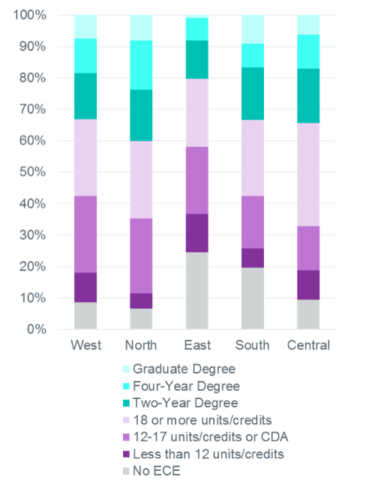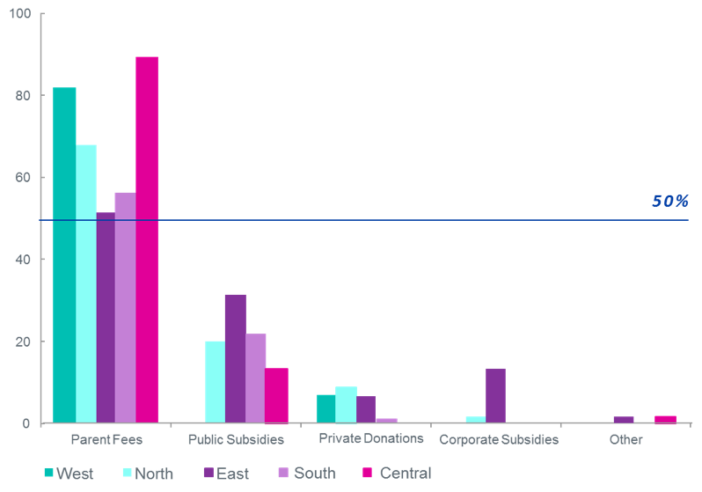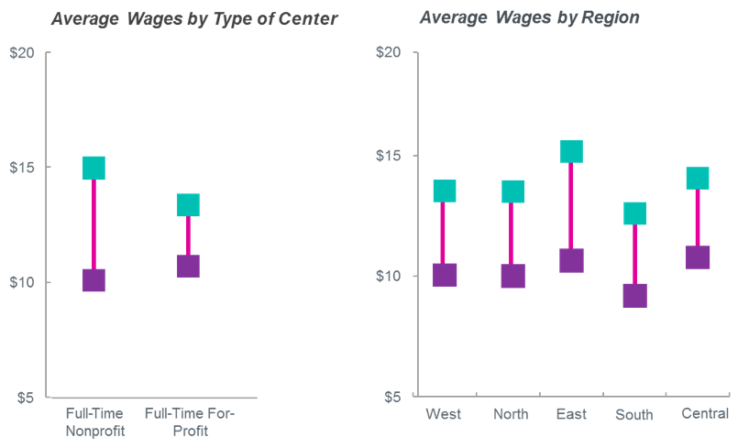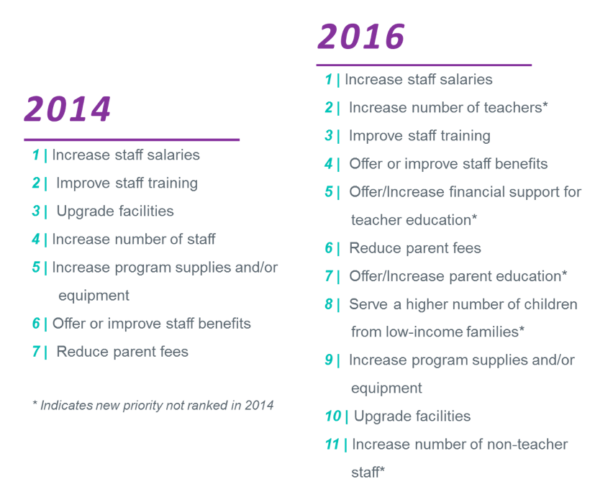Today, we’re proud to release the results of the 2016 Early Care and Education Survey – a look at trends across the early care field in our community and the only one of it’s kind in Central Texas. This year’s data shows more of the same positive trends we saw in 2014, and also similar challenges.
Teacher education in early childhood varies widely depending on where you live
Our data indicates that teacher education levels in early childhood education centers vary greatly between the regions of Travis County. 20% – 25% of East and South Austin center teachers have no early childhood education beyond high school. West, North, and Central Austin fair better with only 7-9% of teachers having no formal early childhood education training.
Regional Differences in Early Childhood Education

The survey also found that long-term teacher retention has decreased over the past two years.
Parent fees make up the bulk of funding for child care centers – including in low-income areas
The survey found that centers, across nearly all regions in Travis County, depend on parent fees for the largest portion of their income. Centers in East, South and North Austin also rely on public subsidies for funding, with private donations and corporate subsidies playing a minor role for the regions as well.
Child Care Center Funding Sources

This may be part of the reason why the cost of child care is so high – approximately the same as the cost of tuition at a public university in Texas.
Average wages per hour dropped slightly and remain roughly half of the wages for public school teachers
Early care and education teachers, on average, made between $10.67 and $14.07 per hour with limited benefits.

Average wages dropped by $0.25 to $0.75 per hour since the 2014 Survey was conducted, and these rates are still roughly half of wages for public school Pre-K teachers.
Priorities for growth stayed the same: increased salaries, improved training
The top priority of centers since 2012 has been to increase staff salaries and remained so this year as well. 2016 saw a shift towards an emphasis on increasing salaries, training and benefits for teachers, with the top five funding priorities all related to improving conditions for center teachers.

Over the past two years, emphasis has remained on improving conditions for center teachers – suggesting that centers are still lacking the necessary funding to make improvements.
About the Survey
The Early Care and Education Survey is a project by the UWATX Success By 6 team. We collected data on enrollment, quality rating, funding and budgeting priorities, as well as staff education, wages, benefits, working conditions and retention at child care centers.
The survey was distributed to all early childhood care and education centers in Travis County; approximately one-fourth of the centers responded to the online survey.
For more information on what to look for in a quality child care center, check out our top 10 tips.
